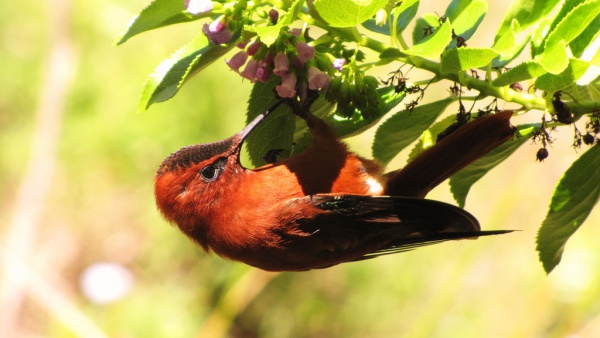Facts About Juan Fernandez Firecrown
The Juan Fernández firecrown is a distinctive species of hummingbird found solely on Isla Robinson Crusoe, part of a three-island archipelago in Chile. Unlike some other hummingbird species, the Juan Fernández firecrown is non-migratory and shares its habitat with the smaller green-backed firecrown.
One of the most notable characteristics of the Juan Fernández firecrown is its pronounced sexual dimorphism, where males and females exhibit markedly different appearances. Males are larger, measuring approximately 11.5 to 12 centimeters in length and weighing around 10.9 grams. They boast a vivid cinnamon-orange plumage with a striking iridescent gold crown. In contrast, females are smaller, about 10 centimeters long, and weigh around 6.8 grams. They feature white underparts with green and black markings, an iridescent blue crown, and blue-green upperparts.
These hummingbirds inhabit forests, thickets, and even gardens. During the summer, males are frequently seen in the island’s town. They feed on nectar from various plants, including the critically endangered "cabbage tree" and other native flowers. Females typically lay two white eggs in nests constructed in Chilean myrtle trees.
Regrettably, the population of the Juan Fernández firecrown has been decreasing. A 2002 census recorded fewer than 200 individuals, with only about 60 females. This decline has led to the species being classified as Critically Endangered by BirdLife International, prompting conservation organizations to take action.
Several factors are contributing to this decline, including habitat destruction, the proliferation of non-native plants, predation by cats, and soil erosion caused by introduced rabbits and goats. Current conservation efforts are focused on addressing these threats to help save the remaining Juan Fernández firecrowns from extinction.

 Peru
Peru